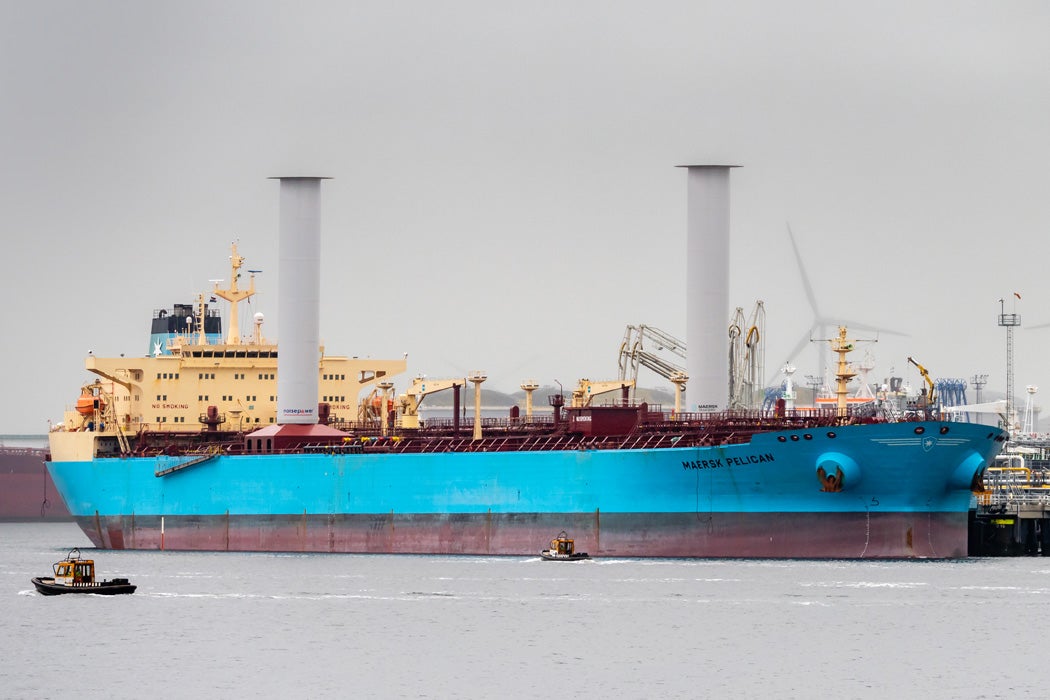Global shipping is a hidden but potent contributor to global climate change. Between 3.5% and 4% of global greenhouse emissions are due to the shipping industry. Huge cargo ships burn a particularly dirty type of fuel, and require lots of it to move long distances. Now, in an effort to improve their image and save money on fuel, some transportation companies are going back to their sailing roots. Wind power is making its way back into the shipping industry.
An early discussion of using wind power to increase ships’ efficiency by Neil Bose and James MacGregor was published in 1987 in the journal Wind Engineering. To sell wind power to the maritime industry, Bose and MacGregor emphasized the potential fuel savings. They focused in particular on fishing vessels. While typically smaller than cargo ships, these vessels’ towing of heavy nets increases their energy costs.
The industry explored the idea of using actual sails to aid fishing fleets. The idea was deemed impractical, because of the difficulty of providing the needed stability for sails on larger sails, the crew effort required, and the inability to control the direction of the wind. (Some of these objections might be overcome on cargo vessels, which move along stable trade winds.)
Bose and MacGregor settled on examining mounted turbines on fishing vessels, which would operate as a supplement to the engines, creating a hybrid. Ships operating offshore are exposed to relatively consistent winds, allowing for increased energy efficiency without sacrificing any control. As a bonus, turbines don’t take up much deck space. However, a few technical details needed to be worked out, such as the best place on a ship to place a turbine for convenience and stability. It was also important to limit upfront costs or the fuel savings wouldn’t be worth it. When all was said and done, Bose and MacGregor calculated that a turbine drive ship could save between 20% and 25% on fuel costs.
Weekly Newsletter
Ten years later, in 1996, Billy Roesler and his colleagues discussed an even more innovative way to harness the wind. Writing in SAE Transactions, the team turned to the world of unmanned aerial vehicles (UAVs) for ideas. Virtually eliminating the need to sacrifice any deck space, Roesler’s team proposed harnessing enormous UAVs to cargo ships, basically using a kite the size of a commercial airliner to help tug the ship along. With automatic controls, the kite can fly whatever pattern is required to catch the most wind and generate the most thrust. There are a few technical difficulties, particularly how to launch and retrieve the kite, but the idea has undergone considerable testing.
The new versions now entering service rely on turbines, not kites. The new designs are supplemented by solar panels, and many of the problems identified by Bose and MacGregor have been resolved. With the improvements, the modern wind-assisted ships will cut fuel consumption and emissions by 30%. It’s a start.








